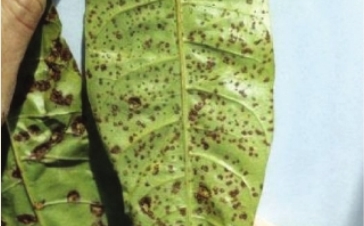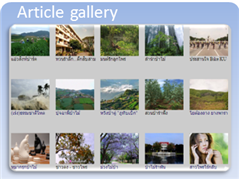A New Threat to Eucalypt Plantations in SE Asia?
About one year ago in April 2010, a new disease was identified in Queensland Australia that was affecting a wide range of native species including the Family Myrtaceae which includes the genus Eucalyptus.
Many Eucalyptus species have been used to establish large areas of plantations for pulp in the paper making industry, for poles in the construction industry and for firewood and farm building material.
The Australian government has set up a Myrtle rust National Management Group which reported in late 2010 that it was not technically feasible to control the disease and its spread in Australia, so a risk management approach would have to be adopted.
According to the Myrtle rust question and answer sheet prepared by the Australian Quarantine and Inspection Service, this diseases is native to South America and is also present in the United States of America (Florida and Hawaii) and Mexico.
It is not known how this disease entered Australia, however, rust fungi produce microscopic spores which are easily carried by wind currents, on people£s clothing, on plants or on goods that are shipped around the world. The rust is now thought to have spread extensively along the upper east coast of Australia in the warmer subtropical area.
More information and other photographs are available at http://www.daff.gov.au/aqis/quarantine/pests-diseases/myrtle-rust/myrtle-rust-qa
What does it look like?
The fungus causes spots on leaves and stems of susceptible plants. These spots develop masses of orange to yellow powdery spores. The disease most often affects young shoots and the growing tips of plants causing leaves to become curled and distorted and often killing new growth. (More photos at http://www.dpi.qld.gov.au/4790_20091.htm )

Because many species that are being grown in SE Asia can be affected by this disease, it is important that eucalypt plantation owners are made aware of the importance of early identification and control.
The Australian Network for Plant Conservation on its website (http://www.anbg.gov.au/anpc/resources/Myrtle_Rust.html) says that Myrtle Rust (Uredo rangelii) is thought to share many biological and ecological characteristics of Eucalypt/Guava Rust (Puccinia psidii) that is regarded by the Commonwealth Primary Industries Ministerial Council as ™one of the most serious threats to Australian production forests and natural ecosystemsî
It has potential to cause direct mortality inan estimated 10% of all Australian native forest plant species (and the great majority of dominant species) that belong to the family Myrtaceae, and with indirect effects that may include habitat loss for native fauna and flora, reduced regeneration and recruitment of young plants, greater impact of fire, and canopy leading to erosion, reduced water quality, reduced water retention in soil and vegetation, and potentially large losses to the forestry industry.
So watch out for this potential new threat½there are enough natural challenges in successfully growing a healthy commercial crop of trees without having additional barriers!

Last updated: 0000-00-00 00:00:00

